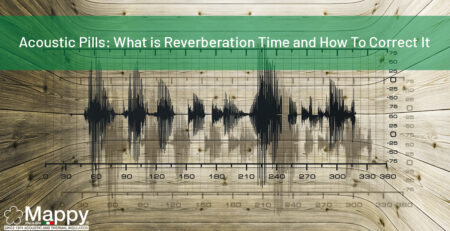What Soundproofing Is and How Does It Work?
In recent years, the importance of sound insulation has grown more and more in the field of building design, especially when creating living spaces with high standards in terms of acoustic comfort.
Let’s analyze what are the principles underlying noise reduction andwhat are the main solutions for creating acoustically comfortable environments.
Soundproofing and Sound Insulation Power
Soundproofing is the ability of a building material or structure to limit the propagation of sound to another one.. It can be expressed as the difference between the noise recorded in a room called “source” and that registered into a contiguous room called “receiver”.
On the other hand, the sound-insulating power of a structure represents its ability to reduce the transmission of the incident sound on it and it is an intrinsic feature of the structure, independent of the size and characteristics of the rooms.
The measurement used to assess the insulating properties of a given material is the sound-insulating power index Rw. This value expressed in dB represents the ability of a single panel, but more frequently of a complete structure (wall, floor, etc.) to reduce the passage of noise from one room to another.
However, this value does not take into account all forms of sound energy transmission from the emitting to the receiving environment (direct transmission, aerial lateral transmission and structural lateral transmission) and it can only be measuredin laboratories.
For this reason it is better to carry out the measures of sound-insulating power on real buildings: in this case we talk about apparent sound-insulating power R’ (which takes into account all forms of transmission of the sound wave) to distinguish it from the “pure” one R which refers to the direct component only.
The method of calculation of the apparent sound insulating power is relatively complex but can be simplified with the so-called “Law of mass” according to which the sound insulating power increases as the mass of the insulating do.
The higher the R’w value is, the better the acoustic performance of the element considered and therefore the insulation is.
Sound Insulation Applied to Buildings and Houses
In most buildings, low acoustic comfort is the most common a source of disturbance. To ensure the highest level of soundproofing, it is important to intervene already from the design, and construction phases in relation to to noises coming from outside, but also from those coming from apartments and adjacent rooms.
During the construction phase of a building project, this delicate and fundamental aspect is entrusted to the acoustic designer who, in collaboration with other technicians, has the task of choosing materials, machinery, fixtures, coatings and more, which, inserted inside the building envelope ensure acoustic well-being.
By convention, it is customary to group construction systems into two broad categories:
- Wet construction systems.
- Dry construction systems.
In the last decade there has been a surge in the use of the dry construction systems which has gradually increased and almost doubled its market share.
Often, to intervene on existing problems or to avoid facing them from a structural point of view,it is common to use technical materials with charged soundproofing masseswhich have the function to stop the propagation of sound waves.
Sound insulation applied to the structure of an environment, on the other hand, makes use of solid physical barriers with high mass and cavities (mainly plasterboard with sheaths, fibers and air voids), able to contain the acoustic energy inside the rooms,or to keep it from getting in. In this case , the coverage is extended to the entire surface of the partitions of the room to be insulated, including ceilings and floors, appropriately decoupling the coatings from existing structures to avoid creating acoustic bridges.
Quando ben progettato, un intervento di isolamento acustico è in grado di operare anche alle basse frequenze, che rappresentano la problematica maggiore soprattutto in ambito musicale.
When well designed, an acoustic insulation intervention is able to operate even at low frequencies, which represent the hardest problem especially in the musical field. Works of this type are very invasive, so it is easy to understand why alternatives such as panels or curtains are very sought, but the final result in terms of acoustic performance is not the same as compared to a structural intervention.
Sometimes, in addition to intervening on the partitioning and false ceilings of the rooms, we act in a targeted manner at the source of the noise to achieve higher performance levels, such as:
- Wrapping pipes and drain columns with specific technical materials.
- Lining bins and technical rooms.
- By isolating the lift shafts.
- Desolidarising the points of contact between walls, floors and ceilings.
Acoustic insulation is not a simple matter to be tackled “amateur”, but requires a deep knowledge of the industry, procedures and materials,in order to obtain the highest level of acoustic performance. For this reason, it is better to rely on professionals in the sector. Do not forget that an acoustically comfortable environment is an environment that gives us a better quality of life.
Fonte: a cura di Mappy Italia SpA, info@mappyitalia.com
© RIPRODUZIONE RISERVATA






